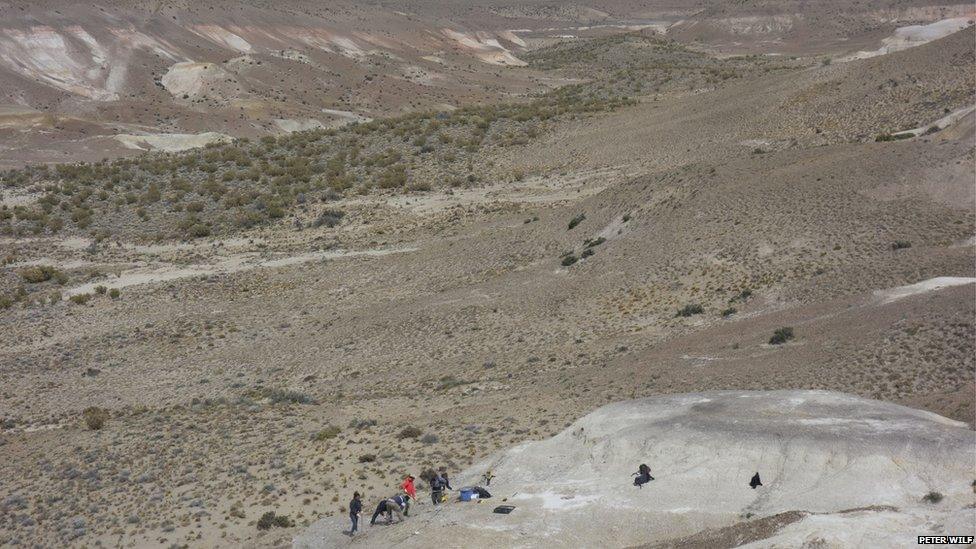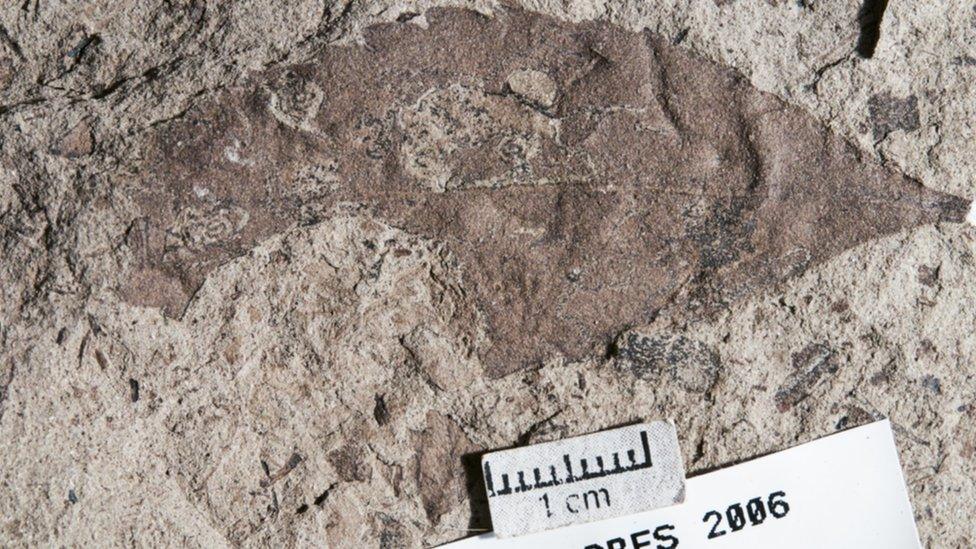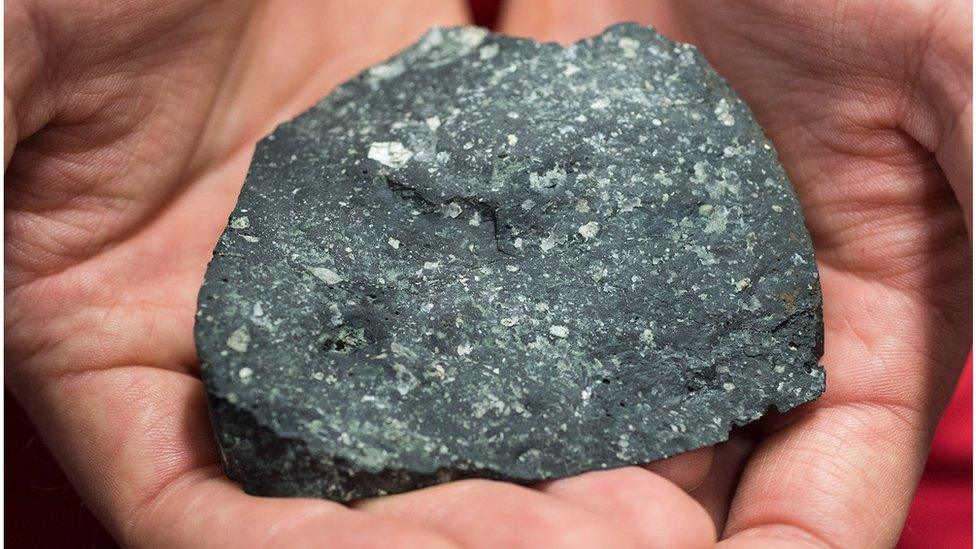Southern Hemisphere recovered faster from dino strike
- Published

The fossils were unearthed in Patagonia, Argentina
Life in the southern hemisphere appears to have recovered more quickly than expected from the asteroid strike that wiped out the dinosaurs.
In North America, it took 9 million years for ecosystems to recover.
However, in South America - further from the impact - insect life bounced back after about 4 million years, according to scientists.
US experts studied fossil leaves for insect damage at a site in Patagonia, at the tip of South America.
Lead researcher Michael Donovan of Pennsylvania State University said: "Here we're showing in Patagonia - far away from the asteroid impact site - insects recovered much quicker than what we have observed in the past from the western interior of North America.
"It took about four million years for the associations (between plants and insects) to reach levels similar to before the extinction compared to the western interior of the US, where it took about nine million years."
Last refuge
Dinosaurs died out about 66 million years ago, at the time when a giant space rock hit Chicxulub in Mexico.
Fossil evidence from North America - relatively close to the site of the impact - suggests it took around nine million years for life on the planet to recover.
However, experts have suggested that the extinction event was less severe in the southern hemisphere, with the region acting as a refuge for some species.

Signs of insect damage on a fossil leaf
The US team tested this idea by looking at plant fossils under the microscope for signs of insects which burrow inside leaves.
They found no evidence that insects survived the impact, suggesting there was a major extinction, as has been found in North America.
However, they found that ecosystem recovery was much faster in South America, with the insect/plant interactions restored within only four million years.
Studies on microscopic plankton and pollen have also provided evidence that life bounced back more quickly in the southern hemisphere than in the north.
The research is published in the journal, Nature Ecology & Evolution, external.
Follow Helen on Twitter, external.
- Published25 May 2016
